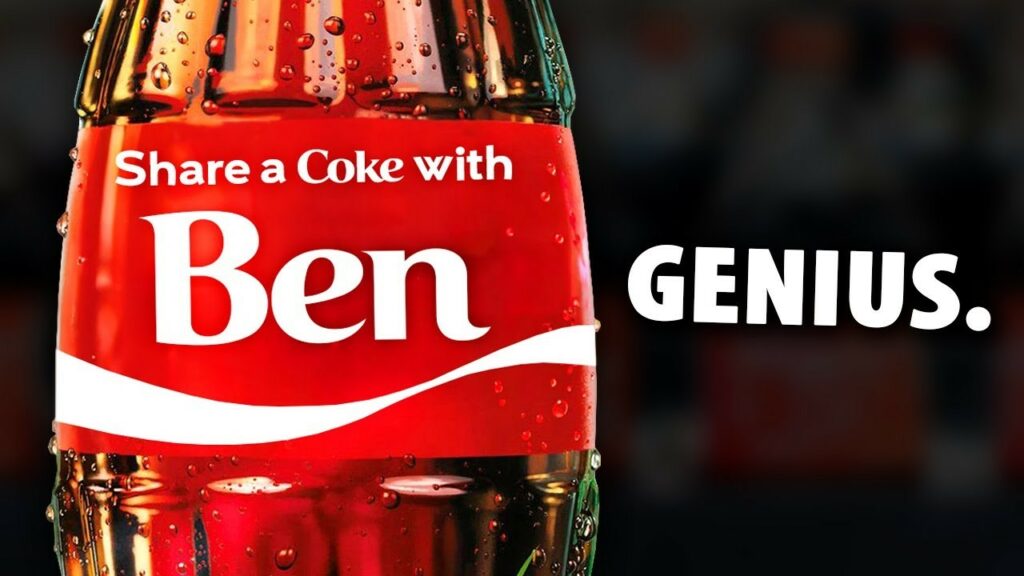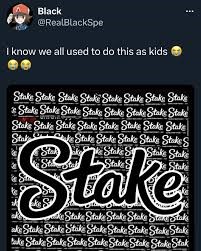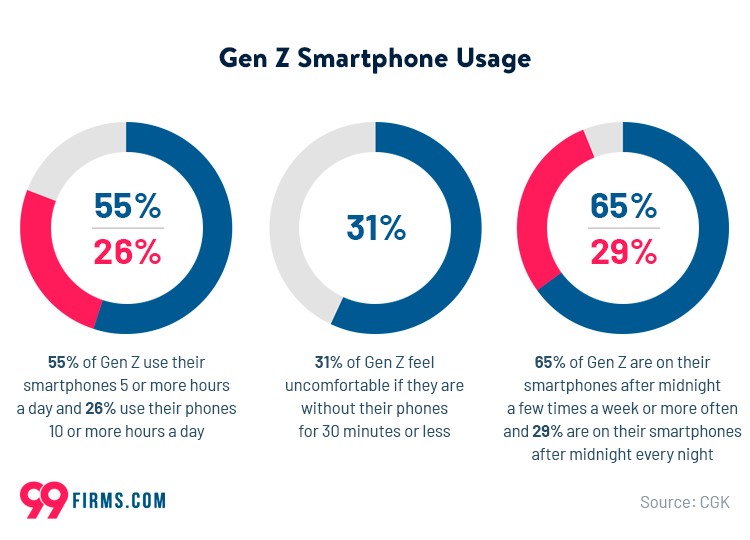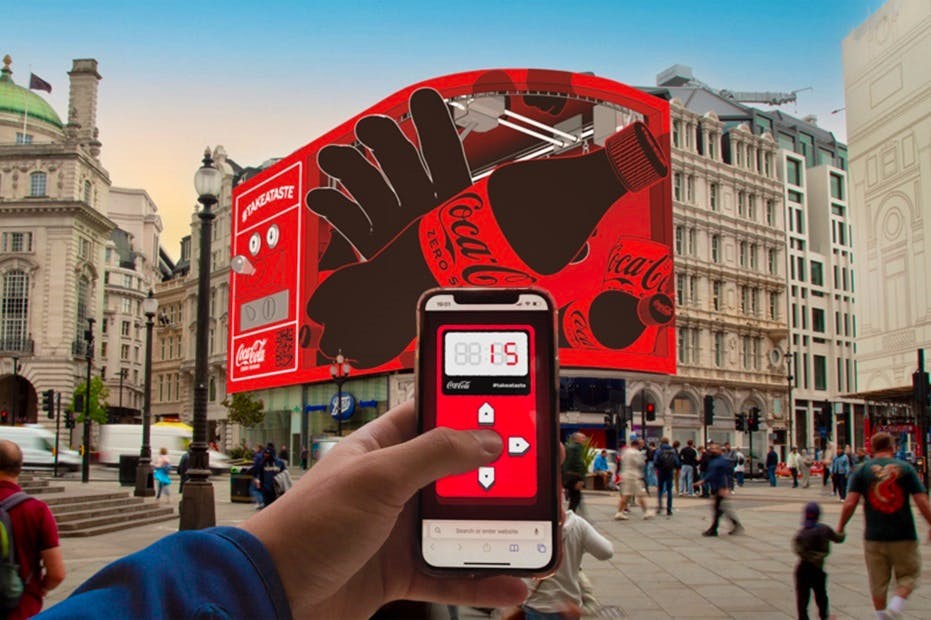After a long wait of 20 years, Gen Z has finally appeared on the scene.
By 2030, Gen Z, the largest generation ever, will command over $1.2 trillion in purchasing power!
And 2025 is the year from which they will increasingly come of age to make purchasing decisions themselves!
From food to furniture and electronics to experiences, they will have the money to spend and the awareness of how to spend it usefully.
If you’re a brand with an aging customer base, the best strategy is to pivot to selling to Gen Z.
But how can you reach a generation that’s always on the go?
Well, we’ve got just the right solution in store for you: Experiential Marketing.
In this blog, we’re gonna take a look at the A-Z of Experiential Marketing. From what it is to how to use it to your advantage, we’re going to tell you everything you need to know to set up an experiential marketing campaign for your brand.
Let’s dive in and understand the art of selling to Gen Z!
Who Is Gen Z?
Anyone born between the years 1997 and 2012 is young enough to be called a part of Generation Z or Gen Z.
This generation is the first that has either grown up with the internet from the beginning or witnessed its rise first-hand before reaching adulthood.
In short, the internet forms a huge part of Gen Z’s lives.
They explore ideas, make friends, and, most importantly, buy things from the internet with ease and confidence absent in other generations.
The Gen Z worldview brings together memories of a time without the internet and a time that can’t be imagined without the internet.
They are characterized by tech-savvy, hands-on and internet-driven purchasing.

What Marketing Values Does Gen Z Prefer?
Ever since the market came into existence, every generation has exhibited a unique buying behavior. For instance, Baby Boomers responded to conceptual selling. Gen X and Millennials valued value-for-money and handshake deals.
When it comes to Gen Z, they have access to a lot of information and ways of verifying the word of a salesperson. In short, they have access to a flattened selling landscape.
But there’s far more that characterizes them than mere vigilance and abundance of information. In our experience, they exhibit the following buying motivations and behaviors:
1. Influencers
Gen Z is popularly known as the influencer generation. To put it simply, members of Gen Z value influencers more than celebrities.
The reason is simple: while most celebrities become popular through mainstream media like movies and TV shows, influencers focus on cult followings.
And we’re not talking about a “Let’s drink blood out of a calabash” cult. We’re talking about “this makeup tutorial is the best to help you get ready for a first date” cult.
Imagine Swifties, but a world of Taylor Swifts, each with their own dedicated followers.
If you know anything about the power of Swifties, you know how influential influencers can be in marketing your brands and its solutions.
In short, Gen Z trusts influencers. They believe they have an organic connection with an influencer who gives authentic advice and has substance to them.

2. Video Content
Another remarkable shift in consumer behavior with the rise of Gen Z is the popularity of video content.
There are two things that have driven the growth of this phenomenon.
First is the prevalence of video-sharing websites like TikTok and Instagram. Not only can Gen Z learn about new things and participate in the latest trends, but they can also connect with their trusted influencers.
The superstar influencer Khaby Lame is an example of this phenomenon. With his signature move, he is ever-present at the biggest sporting and cultural events. He also has the most followers on TikTok.
So, if Khaby points to your brand, you can assume it’s going to blow up!
Second is YouTube’s nascent presence, which has ripened into one of the biggest sources of customer education. For instance, Amazon shares its selling tutorials through YouTube video links on its web pages.
When the largest shopping store in the world relies on YouTube videos to educate its sellers, you can be sure that it’s the best option for you, too!
So, whether you’re selling furniture, logistics services, pharmaceuticals, or B2B SaaS solutions, video content is a must for you if you want to attract young clients!
3. The Environment
From the California wildfires to the cyclones and storms of the American South, it’s clear that natural disasters are becoming increasingly intense.
On the one hand, they’re causing hundreds of billions of dollars worth of damage. On the other hand, the only way to avoid and minimize them in the future is to invest billions in environment-friendly products.
And Gen Z is all in for the latter!
Again, there’s a very simple logic that dictates this purchasing behavior: Gen Z can’t live without luxuries and products they’ve grown up with. But they also can’t live without a safe planet and a healthy ecosystem.
The solution?
Solutions that focus on rehabilitating and revitalizing the environment. From products that use recycled materials to services that are environmentally cautious in their efforts, Gen Z is increasingly preferring brands that help them save the world!
And we know what you’re thinking: sometimes, sustainability costs money. And what can you, as an enterprise, do without passing on a part of the cost to the customer?
Well, with Gen Z, you don’t have to worry about that: ethical consumption dictates that even if their burger is a couple of dollars more expensive, they’ll prefer it as long as it plays a part in conserving the planet.

4. Authenticity
Complementing an environment-focused approach, Gen Z is also demanding authenticity from the products and services it consumes.
Here’s why it’s important: it’s not just about projecting the need to care about the environment. Gen Z also demands that you show a true commitment to your values through your supply chain, employee behavior, and, of course, your products and services.
To put it differently, Gen Z doesn’t want to interact with the lean money corporate machine but with a brand that creates and believes in social and societal values.
From diversity and inclusion to quality and excellence, Gen Z wants to engage with brands that tell a story with their products and services.
5. Experiences
Lastly, we come to the one thing that has influenced Gen Z beyond all else: experiences!
And we’re not talking about Woodstock in the ‘60s, doing psychedelics and listening to rock’n’roll bands…we’re speaking about experiences that each and every product creates for us when we use them.
The latest smartphone offers an immersive experience with a vibrant display, smooth-talking AI and a sharp camera. The latest automobile gives us a mobility experience like never before, with robust safety features, sturdy builds and cutting-edge tech like self-driving.
We can sum up our discussion on Gen Z’s buying behavior in one sentence:
While previous generations didn’t know what they wanted before they were shown their new product, Gen Z knows what it wants and is better than any previous generation at spotting a problem-solving product.

What Is Experiential Marketing?
Experiential marketing is a subset of marketing approaches that focus on including the customer in the brand’s evolution.
Different experiential marketing campaigns use a mix of different online and offline tactics. However, from the latest campaigns we’ve seen, we’ve noticed that all experiential campaigns for Gen Z start with online marketing.
In a way, experiential marketing views every customer as a brand advocate.
Experiential marketing is similar to conceptual selling. Conceptual selling is the process of marketing a product/service not through its functions but through the feeling it evokes in the user.
While in conceptual selling, you market a product through an idea, in experiential marketing, you do the same with an experience. This experience could be an entertainment, cultural or sports event you’re sponsoring, a new product launch, or even a store opening.
Apple is one of the best examples of a brand that combines conceptual selling and experiential marketing to launch, popularize and sell new products.
It’s not just the iPhone or the Ipad that Apple is selling: it’s the whole experience of the product launch that attracts thousands of customers to Apple’s annual events.

Let’s consider an example of Experiential Marketing:
A person from Gen Z might have two options: a Nike shoe or a Nike shoe painted by an artist with an environmentally friendly message.
Naturally, the latter will be more expensive as the artist is adding value to the shoe in addition to its functionality.
Even still, and probably because of it, the Gen Z’r might just prefer the latter!
This is the power of experiential marketing.
What Are the Best Experiential Marketing Strategies?
Alright, so you understand the hype around experiential marketing and the impending takeover of the user market by Gen Z.
But what strategies can you use to market to Gen Z and carve out a competitive advantage before the market settles into a rhythm?
We’ve got you covered! Here are the experiential marketing five strategies we believe will pay huge dividends in the future:
1. User-Generated Content
User-Generated Content, or UGC, has been on the rise for at least the last 10 years.
Here’s how it works: you use a viral prompt or a sustained channel to invite users to make content while they use your brand’s products or services.
Coca-Cola is one of the pioneers of using UGC to market its products. It launched its #ShareACoke campaign in 2011 when most Gen Zers probably needed permission just to drink Coke.
Regardless, the viral campaign still continues to this day, with Coke sharing messages and occasions that best suit a bottle or can of Coke.

The best part? Coca-Cola’s only investment was in making the trend go viral. After that, millions of people helped the company generate content, making them feel included in the company’s growth.
But, you might be thinking it’s easy for Coca-Cola to take advantage of UGC. After all, it’s a big brand with deep pockets and millions of customers.
What about a service-oriented enterprise? What about a brand still in the startup stage?
Trust us: there’s a way every industry can use UGC to launch experiential marketing campaigns.
Let’s take another example, this time of a logistics company. Not a lot of glamour in moving heavy boxes, right?
Well, it depends. In our opinion, a Vlog of hundreds of your existing customers on the day of their pickup could generate a wave of content and influence towards your brand!
And here’s how you can inspire your customers to make the Vlog: offer them a 5-10% discount if they record their packing and pickup process and agree to share it with you!
Let’s say only 10-20% of your customers agree. Still, you might get hundreds of marketing and educational videos that you didn’t have to spend any money on!
Simple and elegant, right?
2. Reviews, Reviews, Reviews
Reviews are one of the most powerful marketing tools around. Sharply worded comments on Yelp can take down stores and even spark boycott movements.
The easiest way a customer can feel involved in your business is by leaving a positive or negative review.
Take Amazon: Anyone shopping for a new electronic appliance will definitely read the reviews, both negative and positive, to make an informed decision.
This is true not only for the products themselves but also for the buying experience itself.

The same is the case with services; you can bet your bottom dollar that clients looking to avail of your SaaS offering will jump on G2 to see how others have experienced it.
In short, your greatest weapon in experiential marketing is a repository of positive reviews, contrasted by the occasional negative one.
We highly recommend that you ensure that websites like G2, Yelp, and other review platforms have you listed in your relevant industry.
3. Video Content is a Must
More people learn visually than textually. But that just means that images are more powerful than text.
But is there something that’s even more powerful than an image? How about an image that moves, walks, talks and inspires?
We think you already know what we’re talking about: a video.
Whether it’s Steph Curry cooking in an Under Armour ad, Messi visiting the nearest Lowe’s, or Super Bowl ads entertaining millions around the world, video content has a special place in experiential marketing.
Videos have taken center stage in today’s marketing world. Yes, text is important as it is the basis of language, communication and agreements.
In our experience, three things have led to the rise of video content marketing:
- Faster internet speeds
- Increased availability of cameras
- Apps through which we can share and watch videos
So, it may well be the case that videos were better than text for marketing purposes, and it was only the lack of technology that was holding us back!
Regardless, 95% of marketers in 2025 have stated that video marketing is their priority.
And here’s the stat that completes our loop: 70% of Gen Z spends at least three hours a day watching videos online. Whether they’re TikToks, Insta reels or YouTube shorts, Gen Z is treating social video platforms as their very own search engines.
And here’s the kicker: videos have always existed as advertisements. But the neat separation that used to exist because of television (remember that?) has now disappeared!
Yes, people, and especially Gen Zers, can tell an ad from a video. But they don’t classify an influencer sharing a video as an ad, do they?
Simply put, video content blurs the line between a paid ad and an honest opinion! And according to us, that’s the best space in which you can run an experiential marketing campaign…

4. Social Media Presence
For Gen Z, social media is the new search engine. It’s where they search for friends, the news, the latest trends, shopping inspiration, and more.
It’s also the platform to which they turn to complain, boycott and question brands.
If nothing else works, a good old social media rant will definitely turn a few heads and cause some companies to lose some customers and the profits they would’ve brought in.
So, cultivating a positive social media presence is key to experiential marketing. For instance, let’s say you have a handle on X (FKA Twitter), and someone complains about your products, but you don’t respond. In this scenario, you’ve given the complainant a license to talk about your brand in a negative light.
So, is it just better not to have a social media presence altogether?
Well, you could go that way, but then, if your competitors invest in maintaining a positive social media presence, you might lose ground in your industry!
Take Stake, the betting giant. If you’ve ever doom-scrolled on X (FKA Twitter) or spent any considerable time exploring the sports feed, you’ll find images or memes with the Stake logo talking about the latest news in different sports.

This is a part of their experiential marketing campaign, in which they’re paying medium and big-sized accounts to post images curated by them.
Some active and cautious users even took the time to point out that Stake was using X (FKA Twitter) accounts to virally market their brand.
Another example is Ryanair. Ryanair is different from Stake because, although it maintains a presence on X (FKA Twitter), it takes a hands-on approach. On a regular day, you can see the Ryanair admin commenting on politics, Selena Gomez’s social media hiatus and Breaking Bad memes.

In short, a healthy and positive social media presence is your best bet at taming the giant that could quite literally destroy your brand in a matter of days, clicks and shares!
5. Influencer Partnerships
Lastly, we return to the point where we started: influencers.
This new category of social media users is different from big accounts, celebrities and brand advocates.
Their secret? Subtlety and authenticity.
Let’s consider the example of Daniel Wellington, a brand that sells fashion accessories. It started not with the biggest or the best influencers but with micro and nano influencers.
Their goal was modest: to increase the number of Instagram posts with the hashtag #danielwellington.
So, did they achieve their goal with micro and nano influencers? Well, you tell us: today, there are over 2 million posts with the hashtag #danielwellington. Daniel Wellington is also the most famous accessory brand on social media.
Let’s take another example: Warby Parker. If you thought Daniel Wellington’s use of micro and nano influencers was risky and unconventional, wait till you find out about Warby Parker’s strategy.

Not only did they use all types of different influencers, but they also included animals as some of their best brand ambassadors. After all, who’s gonna object to a fluffy bunny wearing specs? Certainly not us!
Plus, Warby Parker tailored its experiential marketing campaign to suit Gen Z’s changing demands. It has declared that it will donate a pair of glasses to the needy for every pair of glasses it sells to its customers!
Warby Parker and Daniel Wellington have thus given us two of the best examples of how to run influencer-powered experiential marketing campaigns!
How to Prepare Your Brand for Experiential Marketing?
As a veteran growth marketing agency, we understand your anxiety and eagerness to kickstart your own experiential marketing campaigns.
So, what do you need to prepare for experiential marketing?
Before all else, we want to congratulate you because you’ve already taken the first step towards creating an experiential marketing campaign: learning about it.
Now, combined with a dash of creativity, you only need some other preparatory steps, and you’re all set to capture Gen Z’s attention for your brand.
Here’s what we recommend:
1. Mobile Optimization
While more than 80% of Americans shop online, a majority of the internet’s organic traffic also flows through mobile devices.
And these figures will only continue to grow as Gen Z becomes the dominant purchasing demographic.
So, we recommend you start creating websites, content and media tailored to mobile devices.
Just to make things clear, a whopping 98% of Gen Zers own mobile phones.
So, it’s safe to say all your Gen Z customers already have a mobile phone, and that’s the channel you need to target.
Remember, your customers can shop from anywhere and at any time. But in all cases, they’ll probably be using a mobile phone to place their orders.

2. Affiliate Marketing
Influencers belong to the wider category of affiliates. In fashion, retail and D2C segments, they’re called influencers. While for B2B categories they retain the title of affiliates.
And we’ve already explored in detail how affiliates and influencers are increasingly but subtly exerting control over the selling process.
We suggest that you start forming long-term relationships with influencers and affiliates with a view to future collaborations.
This will give you a headstart in communicating indirectly with Gen Z.
3. Value, Not Just Functionality
Next, it’s important to understand that experiential marketing is more than just about your product. It’s about the value and the story behind the product.
So, your product might be a simple pack of tissues. But what you’re selling is a recyclable product that did not consume any trees in its manufacturing process. And that’s what Gen Z wants to buy.
Our recommendation: don’t sell a product, tell a story that revolves around it. And Gen Z will flock to the product anyway.
An example of this is Fiji Water, which collaborated with fitness influencers and even led to the creation of a massive amount of User-Generated Content.

4. It Pays to Be Sustainable
Lastly, we urge you to take sustainability seriously, not as a fad of ethical consumerism, but as a market commodity.
The reason is simple: it’s not just the environment that benefits. It’s also profitable for your bottom line.
The key to marketing to Gen Z is to invest in the future while cutting losses in the present.
The best way to do this is to commit a long-term plan to sustainability and use it as a marketing device to drum up loyal customers who would be willing to subsidize your transition to a greener product and process.
Your Product/Service + Experiential Marketing = Gen Z Revenue
Just as conceptual selling was the defining marketing strategy of the 20th century, experiential marketing will be for the 21st. And this isn’t just a claim: it’s a prediction based on the most essential characteristics of Gen Z’s buying behavior.
We have a generation that thrives on interrogating claims, knitting communities and communicating through internet-powered mobile devices.
So, what’s the best way to convince them to buy your product?
To answer their claims creatively, make them a part of your communities and reach them through mobile devices.
And if you’re wondering how to do all this within your current marketing budget, we’re glad you’re here!
At Lean Summits, we have perfected the art of channeling growth marketing tactics into experiential marketing strategies that bring in real-world results!
Over a decade, we’ve worked with a diverse range of clients across various industries, learning valuable lessons and making giant leaps in marketing the most niche products.
So, whether you’re selling food or furniture, services or products, B2B or D2C, we’re here to provide you with a detailed roadmap to securing your share of Gen Z’s $1.2 trillion spending plan over the next decade.
Connect with us for a commitment-free consultation to brainstorm your very own experiential marketing strategy, or explore our cutting-edge growth marketing solutions!
Together, we can build an experiential marketing strategy to turn Gen Z into your best customer!
Experiential Marketing for Gen Z: FAQs
1. What is Experiential Marketing?
Experiential Marketing is a type of marketing that focuses on involving customers in the evolution of your brand. It prioritizes building a community of consumers who are invested in the brand’s success. The aim of experiential marketing is to tap into Gen Z’s internet-friendly and community-centric values. Examples of experiential marketing include User-Generated Content, Social Media Interactions and Consumer Forums.
2. Why is Gen Z Responsive to Experiential Marketing?
Gen Z is the first generation to grow up with the internet and is now old enough to make buying decisions. Gen Zers value products not just for their functionalities but also for the stories they tell. For instance, a Nike shoe is a product, whereas a Nike shoe painted by an artist with an environment-friendly message is an experience.
3. What are the Best Experiential Marketing Strategies?
The best experiential marketing strategies are the ones that most visibly include customers in the brand’s growth and journey. In our experience, these include:
- User Generated Content: For instance, #ShareACoke and MyCalvins campaigns.
- Reviews: Examples include Etsy and Amazon’s influential user reviews.
- Video Content: For e.g., the highly impactful Under Armour video featuring Steph Curry.
- Social Media Presence: Such as Ryanair’s X (FKA Twitter) banter and memes.
- Influencer Partnerships: Warby Parker and Daniel Wellington’s Influencer Campaigns.
4. How to Set Up An Experiential Marketing Campaign?
From the numerous experiential marketing campaigns we’ve come across and directed, our advice is that you treat experiential marketing as an approach rather than a campaign. The idea is to make experiences front and center of your selling and brand positioning efforts. Here are some preparatory steps you can take to put your brand in the prime position for experiential marketing:
- Optimize for Mobile Visitors
- Invest in Offline Collaborations
- Create and Boost Video Content
- Hire Trusted and Long-Term Brand Affiliates
- Tell the Story of Your Brand
- Highlight Your Brand’s Sustainable Practices


